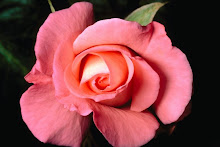Flower Biology In botany, a flower is regarded as a modified stem (Eames, 1961) with shortened internodes and bearing, at its nodes, structures that may be highly modified leaves. In essence, a flower structure forms on a modified shoot or axis with an apical meristem that does not grow continuously (growth is determinate). The stem is called a pedicel, the end of which is the torus or receptacle. The parts of a flower are arranged in whorls on the torus. The four main parts or whorls (starting from the base of the flower or lowest node and working upwards) are as follows:
A flower is the reproductive organ of those plants classified as angiosperms (flowering plants; Division Magnoliophyta). The function of a flower is to produce seeds through sexual reproduction. For the higher plants, seeds are the next generation, and serve as the primary means by which individuals of a species are dispersed across the landscape. After fertilization, a flower develops into a fruit containing the seed(s).Flower anatomy

Although the floral structure described above is considered the "typical" structural plan, plant species show a wide variety of modifications from this plan. These modifications have significance in the evolution of flowering plants and are used extensively by botanists to establish relationships among plant species. For example, the two subclasses of flowering plants may be distinguished by the number of floral organs in each whorl: dicotyledons typically having 4 or 5 organs (or a multiple of 4 or 5) in each whorl and monocotyledons having three or some multiple of three. The number of carpels in a compound pistil may be only two, or otherwise not related to the above generalization for monocots and dicots.
In the majority of species, individual flowers have both pistils and stamens as described above. These flowers are described by botanists as being perfect, bisexual, or hermaphrodite. However, in some species of plants the flowers are imperfect or unisexual: having only either male (stamens) or female (pistil) parts. In the latter case, if an individual plant is either male or female the species is regarded as dioecious. However, where unisexual male and female flowers appear on the same plant, the species is considered monoecious.
Some flowers with both stamens and a pistil are capable of self-fertilization, which does increase the chance of producing seeds but limits genetic variation. The extreme case of self-fertilization occurs in flowers that always self-fertilize, such as the common dandelion. Conversely, many species of plants have ways of preventing self-fertilization. Unisexual male and female flowers on the same plant may not appear at the same time, or pollen from the same plant may be incapable of fertilizing its ovules. The latter flower types, which have chemical barriers to their own pollen, are referred to as self-sterile or self-incompatible.

In those species that have more than one flower on an axis, the collection of flowers is termed an inflorescence. In this sense, care must be exercised in considering what is a flower. In botanical terminology, a single daisy or sunflower for example, is not a flower but a flower head—an inflorescence comprised of numerous small flowers (sometimes called florets). Each small flower may be anatomically as described above.
Flower function
The function of a flower is to mediate the union of male and female gametes. The process is termed pollination. Many flowers are dependent upon the wind to move pollen between flowers of the same species. Others rely on animals (especially insects) to accomplish this feat. The period of time during which this process can take place (the flower is fully expanded and functional) is called anthesis.
Many flowers in nature have evolved to attract animals to pollinate the flower, the movements of the pollinating agent contributing to the opportunity for genetic recombinations within a dispersed plant population. Flowers that are insect pollinated are called entomophilous (literally "insect loving"). Flowers commonly have nectaries on their various parts that attract these animals. Bees and birds are common pollinators: both have color vision, thus selecting for "colorful" flowers. Some flowers have patterns, called nectar guides, that are evident in the ultraviolet range, visible to bees but not to humans. Flowers also attract pollinators by scent. In any case, pollinators are attracted to the plant, perhaps in search of nectar, which they eat. The arrangement of the stamens insures that pollen grains are transferred to the bodies of the pollinator. In gathering nectar from many flowers of the same species, the pollinators transfer pollen between all of the flowers it visits.

Flower scent is not always pleasant to our nose. Some plants, such as Rafflesia, the titan arum, and the North American pawpaw (Asimina triloba) are pollinated by flies, so produce a scent imitating rotting meat.
Other flowers are pollinated by the wind, and the flowers of these species (for example, grasses) have no need to attract pollinators and therefore tend not to be "showy". Wind pollinated flowers are referred to as anemophilous. Whereas the pollen of entomophilous flowers tends to be large grained, sticky, and contain significant protein (another "reward" for pollinators), Anemophilous flower pollen is usually small grained, very light, and of little nutritional value to insects, though it may still be gathered, in times of dearth. Honeybees and bumblebees actively gather anemophilous corn (maize) pollen, though it is of little value to them.


No comments:
Post a Comment